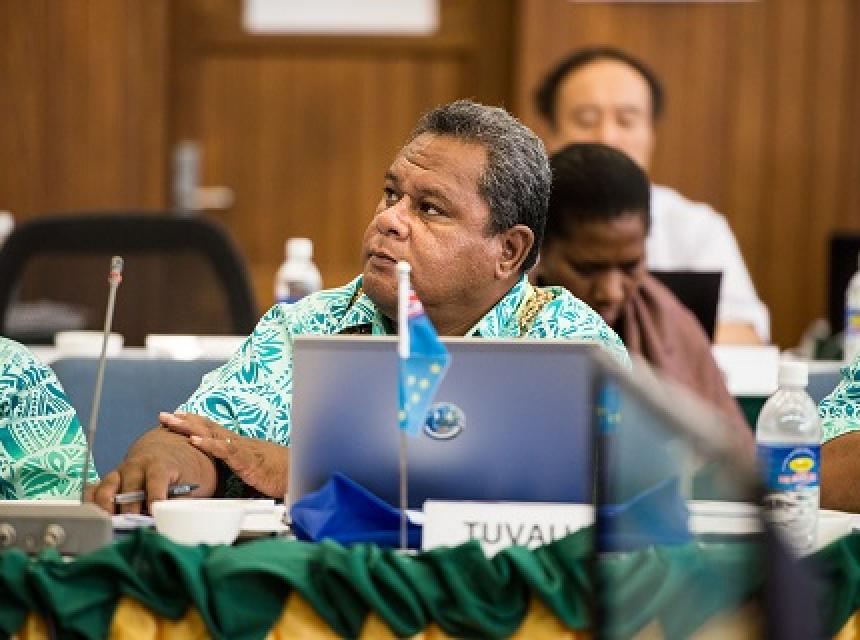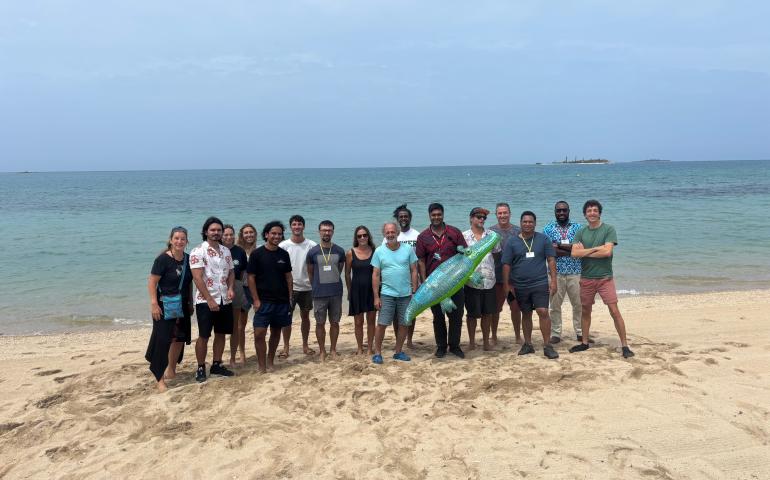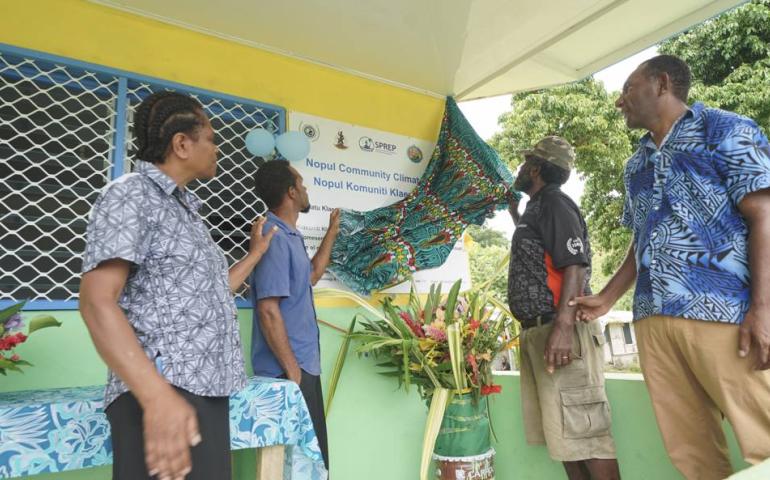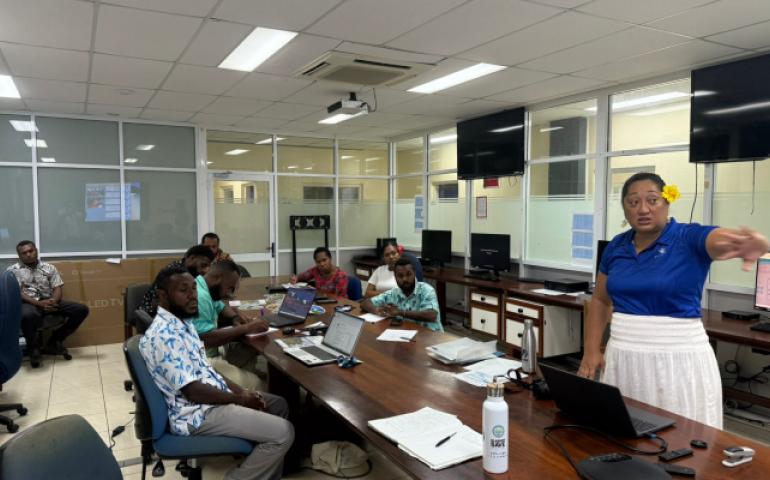Chatty beetles to reach weather and climate messages to the ‘last mile’
By Yvette T D’Unienville of Tuvalu Broadcasting Services
15 August, 2017, Honiara, Solomon Islands, PMC-4 – With the introduction of chatty beetles for a disaster-prone country like Tuvalu, communicating weather and climate messages between the scattered islands of Tuvalu is now possible even if other communications fail.
Speaking from the 4th Pacific Meteorological Council (PMC), which is meeting in Honiara, Solomon Islands this week, Tuvalu Meteorological Services (TMS) Director Tauala Katea said since the last PMC in 2015, the installing of chatty beetles and HF radio were key achievements in improving the country’s early warning communication system “to the last mile“.
Chatty beetles are devices that receive and send text alert designed by Rural Communications using Radio and the Internet (RANET) for remote application where other communications do not exist, are unreliable, or where a simple notification is needed.
The installation of chatty beetles, together with High Frequency (HF) radios, was completed last month on all nine islands of Tuvalu.
The chatty beetles were installed under the National Adaptation Programme of Action (NAPA 2) and they have been especially modified to suit the needs of Tuvalu.
“The advantage of the Tuvalu chatty beetles is that external sirens have been added on to the equipment to serve as the alarm for emergency, while the internal siren will act as the heads-up notification for met officers when there is an emergency,” said Katea.
He said the newly installed equipment would also be used as linkages between the met stations on the outer islands and the main met station in the capital to transmit weather observations every six hours.
In his presentation of RANET to the Council today, Ed Young of United States’ National Oceanic and Atmospheric Administration said that the chatty beetles is suitable for remote areas and can withstand the heat, humid and salty spray.
“The 159-character text message system for notification of early warning hazard messages, it is used as a primary tool for collection of climate, met, and surf/inundation observations and is capable of sending messages to email or cellular phone.”
Director Katea added that the installed equipment also serves as a communication back-up when telephone and internet services in the country fail.
“We have a lot of issues with communication in Tuvalu, so that is part of our efforts to improve getting all the reports from our stations.”
“The equipment came with solar panels as their source of power, so once they are fully recharged, we can use them for communication for a week in times of emergency.”
Other Pacific countries such as Kiribati and the Marshall Islands are also using chatty beetles as back-up communication tools.
Together with the Tuvalu Red Cross Society and disaster office, TMS has also developed a Community disaster response plan for all the island communities to link the communities to the new early warning system and disaster plan.
Other achievements for the Tuvalu include the relocation and installation of its new tide gauge, upgrading of the upper air monitoring and tracking system for TMS and trainings, improving container storage for archiving all the hard copies of weather and climate data, and absorbing the climate officer into the TMS office. – #PMC4 #PacificMet
The Fourth Pacific Meteorological Council is being held in Honiara, Solomon Islands from the 14 – 17 August co-hosted by the government of Solomon Islands, the Secretariat of the Pacific Regional Environment Programme (SPREP) and World Meteorological Organization (WMO). This will followed by the Second Pacific Meteorological Ministers Meeting (PMMM) on the 18 of August.
The PMC and PMMM is supported by the Government of Solomon Islands, SPREP, WMO, Government of Australia through the Climate and Oceans Support Programme (COSPPac) and Pacific Australia Climate Change Science and Adaptation Planning Programme (PACCSAP), Government of Finland, National Ocean and Atmospheric Administration (NOAA), United Nations Development Programme through the Resilience in the Pacific (SIDS) project.
The PMC consists of members of the Pacific National Meteorological and Hydrological Services supported by its technical partners, regional organisations, non-government organisations and private sectors.
This article was developed by a Pacific Media Team of Reporters currently providing coverage on the Fourth Pacific Meteorological Council in Solomon Islands. This activity coordinated by SPREP is supported by a partnership between the Government of Solomon Islands, SPREP, Australia funded project (Climate and Oceans Support Program (COSPPac) and UNDP Disaster for Pacific SIDS (RESPAC) project.
The views and opinions expressed in this article are those of the writer and do not necessarily reflect the views of the Secretariat of the Pacific Regional Environment Programme (SPREP) or the United Nations Development Programme (UNDP)both of which provided funding for generating media articles.
- Log in to post comments




